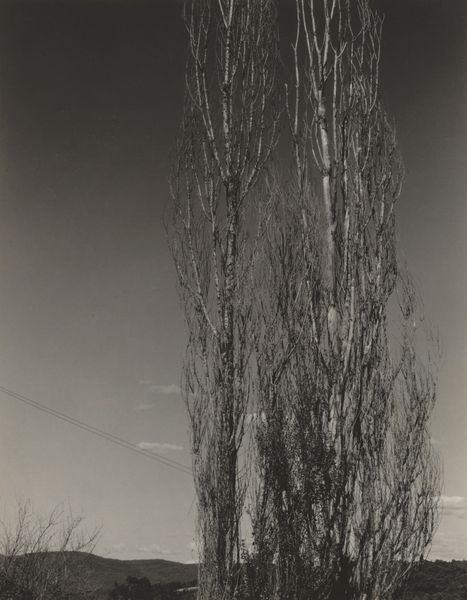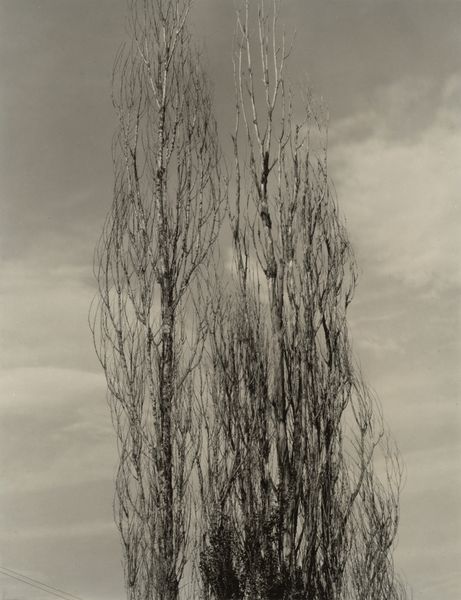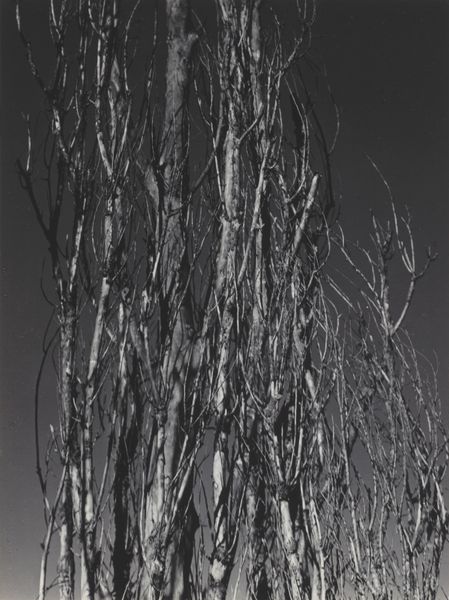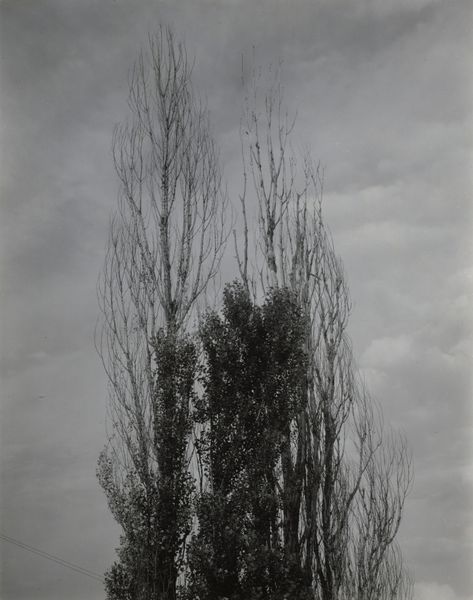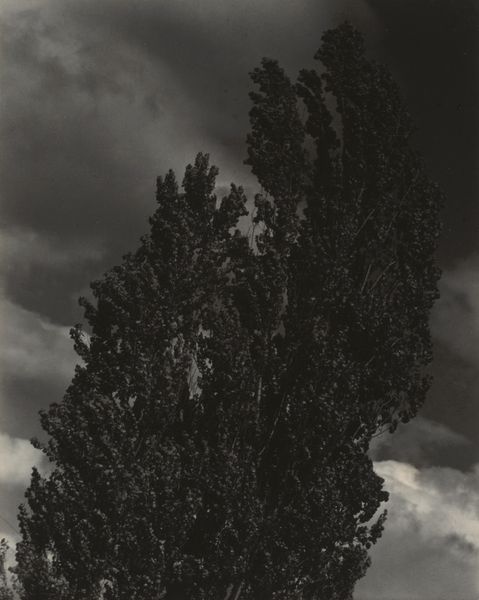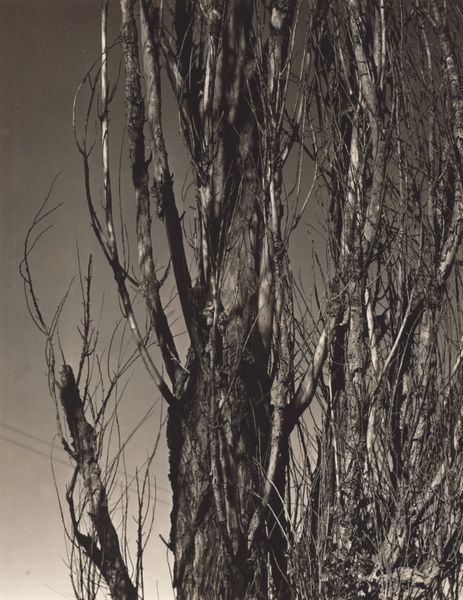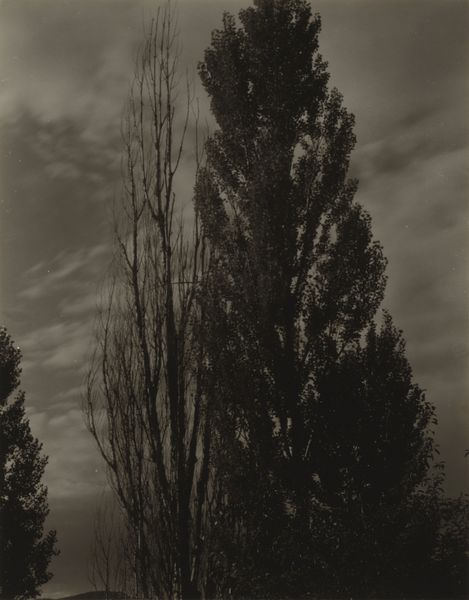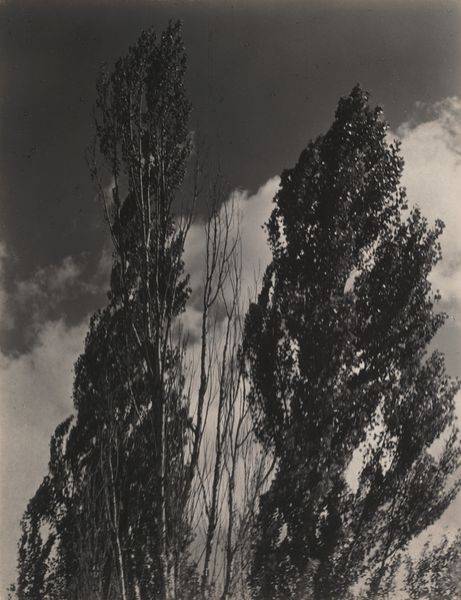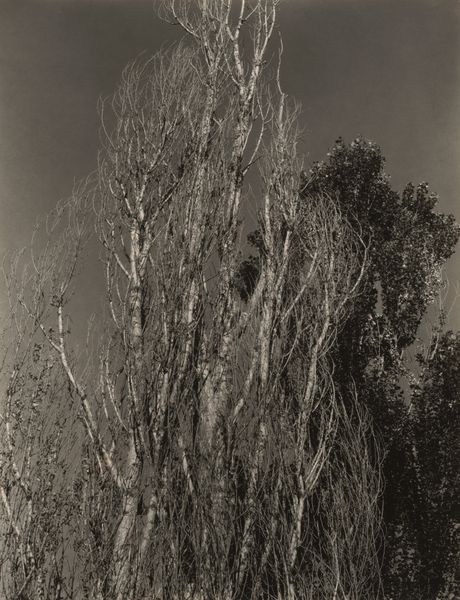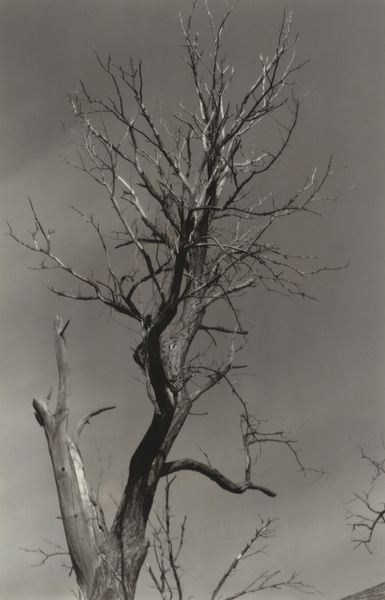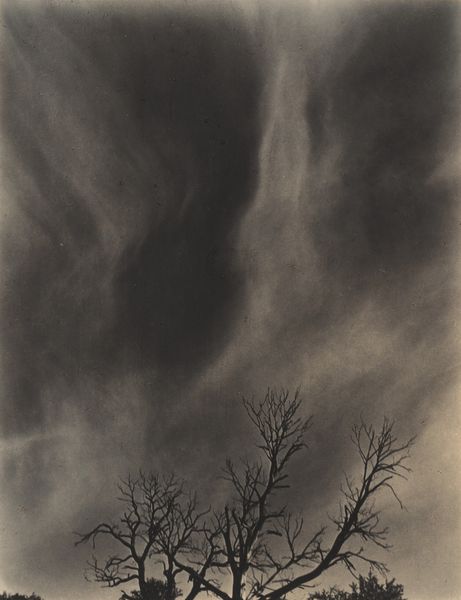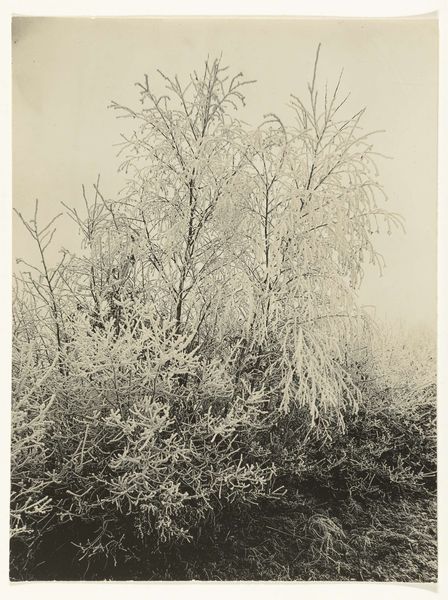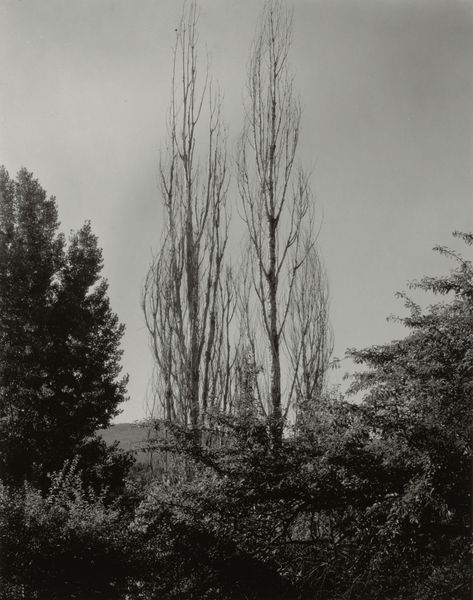
Dimensions: sheet (trimmed to image): 24 × 18.7 cm (9 7/16 × 7 3/8 in.) mount: 51.2 × 39.8 cm (20 3/16 × 15 11/16 in.)
Copyright: National Gallery of Art: CC0 1.0
Curator: So, here we have Alfred Stieglitz's "The Two Poplars, Lake George" from 1934, a photograph rendered in stark monochrome. What's your initial take? Editor: Brisk, haunting, beautiful in a skeletal sort of way. I see a couple of dancers reaching for a monochrome sky, almost devoid of feeling. You feel the chill right through the bone of this picture. Curator: Well, Lake George held profound personal significance for Stieglitz. He spent a considerable amount of time there over the decades, and photographed it extensively. The lake represented an escape from the growing commercialism he saw corrupting American society. Editor: Escape… yes, the almost clinical quality of black and white enhances the theme you point out. Stripping away the warmth and perhaps even the complexity, of colours to get to something 'more real'. Perhaps in this photograph, it becomes more universal. Curator: It does suggest a striving for essence, certainly. This was the modernist impulse – simplifying the subject to communicate fundamental form and feeling. He often aimed, you see, to portray what he called 'equivalents'—images capturing an emotional or spiritual state beyond the literal scene. Editor: "Equivalents". What an interesting word, almost daring, to capture the soul, to represent one state for another... With just these two, bare poplars set against an expanse of monochrome. But where's the *hope* here? Even the faintest hint of a spring green? Curator: Maybe the hope is in the upward reach. Think about Stieglitz's fight to have photography recognized as a high art. An 'equivalent' for painting if you will. So, in that sense, this stark photo embodies a yearning for legitimacy, for transcendence in his chosen medium. The clouds maybe symbolising the challenges overcome...or to be overcome! Editor: It's true...there is some of the landscape and sky showing through as backdrop. I find it a melancholic yet forceful and strong assertion of identity for its time... Curator: Indeed, and when viewed within his wider artistic project, these poplars do symbolize more than just trees in a landscape. It represents a stand, artistic and otherwise, against a perceived loss of American cultural values and heritage. Editor: That adds another layer entirely. Well, I'll definitely walk away from this with much to consider... Curator: As will I. Thanks to you, the political roots of such landscape become more evident.
Comments
No comments
Be the first to comment and join the conversation on the ultimate creative platform.
